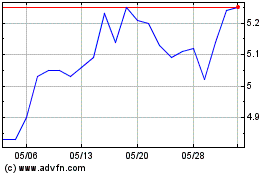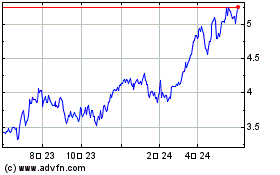- 74% of Americans would sit in traffic for an hour to earn
$200, but only 16% took the time to move money to higher-yielding
accounts.
- As expense pressures mount, 44% of Americans missed their
savings goal in June, up from 35% in March.
- Six in 10 back-to-school shoppers across the U.S. expect it
will impact their ability to meet their savings goals.
Santander Bank, N.A. (“Santander Bank” or “the Bank”) announced
today the findings of its second Growing Personal Savings (“GPS”)
Tracker, a research series exploring Americans’ approach to
building and managing their savings. While many Americans have been
adding to their savings month-over-month, the overall percentage
doing so each month dipped in Q2. The survey found expenses
stemming from back-to-school shopping and energy costs over the
summer will further impact households’ ability to save.
This press release features multimedia. View
the full release here:
https://www.businesswire.com/news/home/20240731667279/en/
As Americans contend with these added financial burdens, many
are missing out on a simple and convenient opportunity to ease
expense pressures by earning more interest on their savings. A
typical American saver1 could earn an additional $200 by moving
money to an account that earns a higher rate of interest, but
certain misperceptions have prevented many from making their money
work for them. For example, half of Americans do not realize
savings rates are the highest they have been in about 15 years, and
some believe it takes too much time to make a change. Yet,
Americans would be willing to do much more time-consuming and
frustrating tasks for $200 — such as sitting in traffic for one
hour (74%) or standing in line for two hours (72%).
“Americans remain resilient in the face of continued financial
challenges, but many are missing out on the opportunity to earn
more with higher interest rate accounts due to general lack of
awareness,” said Tim Wennes, Santander US CEO. “Our research
uncovers both the opportunities and challenges confronting
Americans, which helps Santander Bank as we continue to innovate
and update our platforms, products and services to enhance
engagement and support our customers in achieving their financial
goals.”
Of Americans who are aware of what rate they are receiving,
two-thirds (63%) are earning less than 3%. Less than two in 10
Americans (16%) moved money in the past year to take advantage of
higher rates, and seven in 10 (69%) are not using savings accounts
that pay more interest. These include high-yield savings accounts,
money market accounts and certificates of deposit. While they are
underutilized by savers, seven in 10 prefer the features of
higher-yielding accounts compared to traditional savings
accounts.
Savings Slow in Q2, and Upcoming Bills
Pose Further Challenges
The GPS Tracker shows many (54%) savers added to their savings
balance each month in Q2, though down from 60% in March, and 44% of
those with a savings goal missed their target in June, up from 35%
in March. Americans also fell short of their tax refund savings
expectations this year. While 86% planned to save some portion of
their tax refund, only six in 10 had done so, and those who did
were generally saving a smaller proportion than planned. Expenses
played a major role in these shortcomings, with too many bills or
financial commitments being the top obstacles to saving in Q2.
Additional barriers to saving lie ahead, as Americans contend
with energy costs and a looming back-to-school shopping season.
Four in 10 say they will spend on back-to-school shopping, with one
in three planning to spend $500 or more. More than half of
back-to-school shoppers (53%) will dip into their savings to cover
purchases, and six in 10 believe back-to-school shopping will be an
obstacle to their savings goals. Most parents with children under
age 18 (85%) will incur back-to-school shopping expenses, with four
in 10 (41%) saying it is one of the two most expensive shopping
events of the year. Adding to the stress this summer are rising
energy costs, with 63% identifying them as a barrier to saving.
Americans Lack Sufficient Emergency
Savings
Many Americans lack sufficient emergency savings, with nearly
half (48%) unable to cover a $2,000 emergency expense from savings,
and less than half (49%) having contributed to their emergency
savings in the past three months. While many financial experts
recommend high-yield savings accounts for growing rainy-day funds,
less than one-quarter (22%) who contributed to their emergency
savings in the past three months have such an account. Unexpected
expenses were cited as a major savings obstacle in Q2, highlighting
the importance of being prepared.
Methodology
This research on growing personal savings, conducted by Morning
Consult on behalf of Santander Bank, surveyed 2,209 American
adults. The Q2 study was conducted between June 26 – 27, 2024. The
interviews were fielded online, and the margin of error was +/- 2
percentage points for the total audience at a 95% confidence level.
This data was weighted to target population proportions for a
representative sample based on age, gender, ethnicity, region, and
education. Percentages may not equal 100 due to rounding. Monthly
measures were based on additional monthly survey pulses, conducted
by Morning Consult on behalf of Santander Bank, of ~2,200 Americans
adults.
The full Q2 report and more information about the Santander
Bank, N.A. survey can be found here.
About Santander Bank,
N.A.
Santander Bank, N.A. is one of the country’s leading
retail and commercial banks, with $102 billion in assets. With its
corporate offices in Boston, the Bank’s more than 5,100 employees
and more than 1.8 million customers are principally located in
Massachusetts, New Hampshire, Connecticut, Rhode Island, New York,
New Jersey, Pennsylvania and Delaware. The Bank is a wholly-owned
subsidiary of Madrid-based Banco Santander, S.A. (NYSE: SAN),
recognized as one of the world’s most admired companies by Fortune
Magazine in 2024, with approximately 168 million customers in the
U.S., Europe, and Latin America. It is overseen by Santander
Holdings USA, Inc., Banco Santander’s intermediate holding company
in the U.S. For more information on Santander Bank, please visit
www.santanderbank.com.
Santander Bank, N.A. is a Member FDIC and a wholly owned
subsidiary of Banco Santander, S.A. © 2024 Santander Bank, N.A. All
rights reserved. Santander, Santander Bank, the Flame Logo are
trademarks of Banco Santander, S.A. or its subsidiaries in the
United States or other countries. All other trademarks are the
property of their respective owners.
1 According to the Federal Reserve, the median savings in bank
accounts is $8,000. Earning 2.5 percentage points more interest
annually would equate to about $200 for these typical savers.
View source
version on businesswire.com: https://www.businesswire.com/news/home/20240731667279/en/
Media Contact: Andrew Simonelli andrew.simonelli@santander.us
Caroline Connolly caroline.connolly@santander.us
Banco Santander (NYSE:SAN)
過去 株価チャート
から 7 2024 まで 8 2024

Banco Santander (NYSE:SAN)
過去 株価チャート
から 8 2023 まで 8 2024
